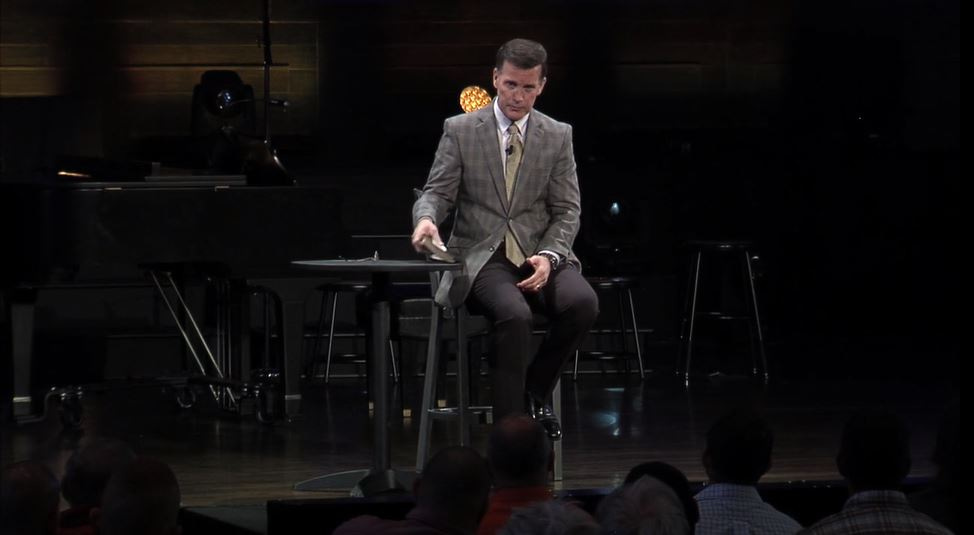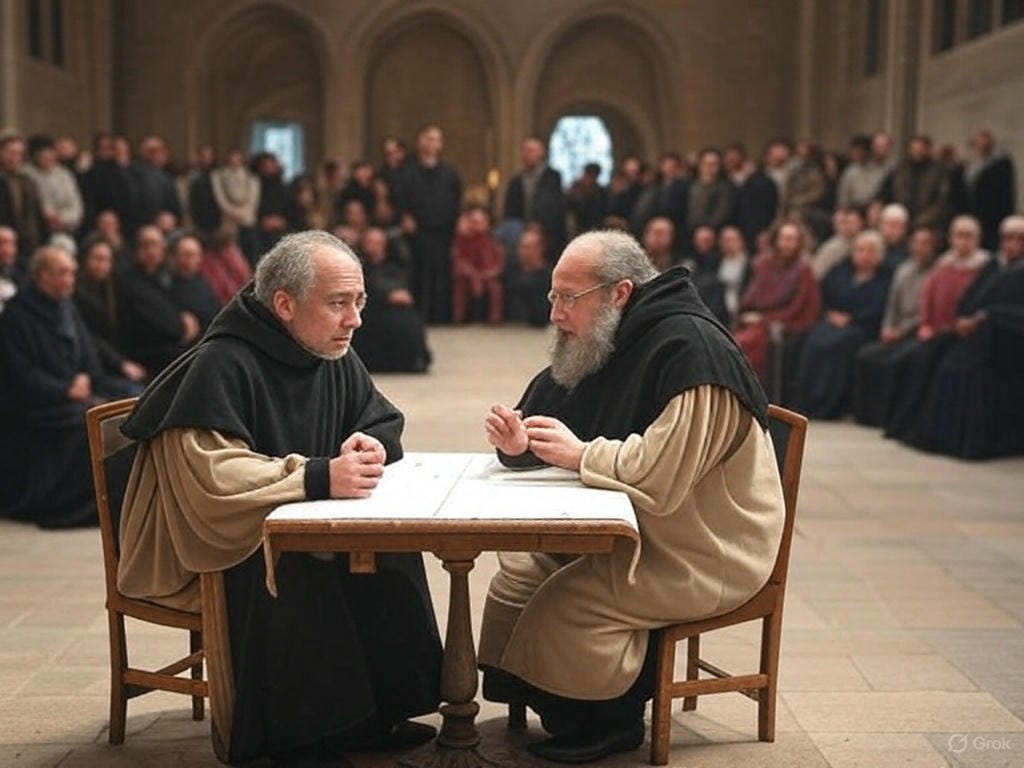Be a Dunce with Me
God's work in questions like: 'How many angels can dance on the head of a pin?'
‘Advance God’s work.’ - I Timothy 3:4
"How many angels can dance on the head of a pin?" is a famous medieval scholastic question often debated during the Middle Ages (AD 500 to 1500).
In our day, this question is frequently mischaracterized as a meme for an exercise in futility.
Let me put this another way: Today, the question, “How many angels can dance on the head of a pin?” is frequently mischaracterized as worthless.
In reality, debating ‘How many angels can dance on the head of a pin?’ may benefit the Kingdom and your Christian life more than you might think.
Next Monday night, Rachelle and I are having dinner with a man from Jackson, Mississippi, who’s visiting Oklahoma City for business.
He recently wrote me an email:
Last Thursday evening, I was at the airport catching up on email and awaiting my flight home to Jackson. After spending the day in a laboratory, I was not looking for a mentally taxing activity to fill my time. But as divine timing would have it, your latest Istoria Ministries email emerged in my inbox as the gate agent summoned us to begin boarding.
After settling into my plane seat, I pulled up your email and began to read.
Immediately, I chuckled to myself as you recounted your conversation with Rachelle, expressing your concerns about the innate intrigue the Babylonian Captivity of the Jews may have with your audience (your self-awareness was refreshing by the way).
In complete transparency, I shared your concern...but figured I didn't have anything better to do on an airplane.
My plane ride home was incredible!
I read through and processed each section and principle in your email, leaning on what I had already learned from you (e.g., Five Ancient World Empires, 12 Dates To Know To Make Bible Flow, Daniel Series, etc).
The details, historical narrative, and spiritual/salvation connections and insights kept me riveted. This C.S. Lewis quote came to mind.
‘Fallen man is not simply an imperfect creature. He is a rebel who must lay down his arms.’
The symbolism of the Babylonian Captivity relative to salvation and how God must rescue us came through loud and clear!
And finally, while pondering each instance of the "three times the hand of God wrote" as recorded in the Bible, I was simply in awe of the beauty of the Gospel.
Rachelle was right. Reading about the Babylonian Captivity wasn't on my bucket list, but this article will be forever etched in my mind.
Wade, you are a ‘Philippians 1:3 influence’ in my life! You have encouraged me to be aBerean and taught me how His Story is central to my story.
Keep up the good and Spirit-filledwork of Istoria Ministries!
As you read the above email, I realize it may seem, at best, a promotion of Istoria Ministries and, at worst, self-promotion.
My purpose is more benign. I wish to emphasize that understanding even the most minute details of history, Scripture, and logic only enhances the advancement of God’s Kingdom work.
Scholarship and Christianity
It’s been my privilege to teach nationwide in the past few years.
I’ve learned something from my experiences about evangelical Christian churches.
Many church pastors shut down debate over theological, philosophical, and moral questions.
Let Iron Sharpen Iron
The origin of the question, ‘How many angels can dance on the head of a pin?’ comes from the Christian Scholastic Movement, which sought to reconcile Christian doctrine with Aristotelian philosophy through rigorous logical analysis.
The ‘Angels Pin Dancing’ question took precedence during the 11th to 14th centuries AD, posed by theological scholars trained in critical thinking.
Medieval Christian scholars emphasized logical reasoning to explore theological and philosophical issues. This is why this ‘Angel Pin Dancing’ question was important to these Christians trained to think critically.
Since angels are immaterial, questions about their spatial presence arose naturally.
Scholastic theologians, such as Thomas Aquinas (1225–1274) and Duns Scotus (1266–1308), extensively discussed the nature of angels—spiritual beings considered messengers of God in Christian theology (e.g., Hebrews 1:14).
Thomas and Duns debated the angels’ metaphysical properties, such as incorporeality (lack of material bodies), location, and movement, all associated with angelic spatial presence.
The Actual Question
So, the question, ‘How many angels can dance on the head of a pin?’ was not about angels dancing but rather a thought experiment to explore concepts that most people today do not consider relevant.
Two important questions are at the heart of the ‘Angels on Pins’ medieval debate:
Can angels occupy space? If they are immaterial, do they have a location, or can they be in multiple places simultaneously?
How many can coexist in a single point (or location)? Does their lack of physical form mean an infinite number could occupy the same space, or are there limits based on their individuation (e.g., each angel as a distinct being)?
Now get this:
The word ‘dunce’ originates as a neutral descriptor of Duns’ erudite disciples.
Keep reading with a 7-day free trial
Subscribe to Wade Burleson at Istoria to keep reading this post and get 7 days of free access to the full post archives.









